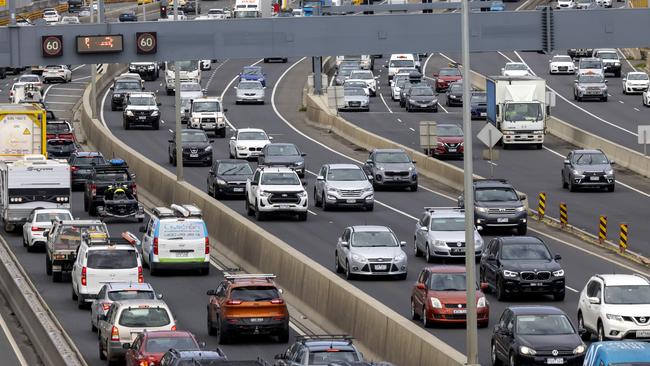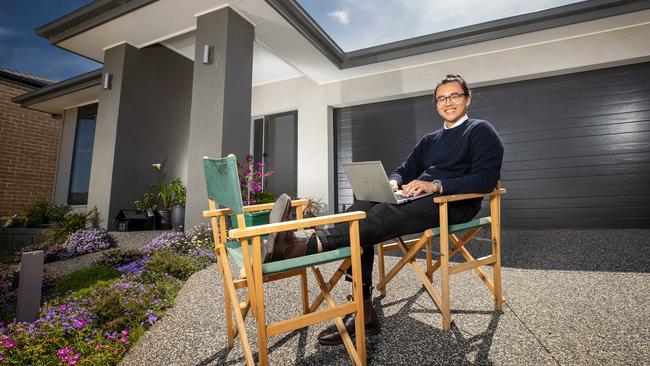Commute from Melbourne suburbs to get worse despite more working from home
Despite more Melburnians working from home, experts are warning the state’s gridlock will get worse especially in these outer suburbs.
Victoria
Don't miss out on the headlines from Victoria. Followed categories will be added to My News.
Crippling congestion will hit Melbourne’s freeways and train network further out from the city as employees flock to outer suburbs and the regions during the next two decades, research shows.
Infrastructure Victoria has predicted that key roads and public transport will be clogged earlier during the morning commute to the city after people moved to outer suburbs and regional areas during the pandemic.
Its research found that under the most likely scenario, a third of workers would work remotely two to three days a week by 2036.
It also found Melbourne’s booming growth suburbs at the city’s edge would be filled by more people, and regional centres such as Geelong, Ballarat and Bendigo would see population shifts to the fringes.
Gridlock will develop during the morning peak more quickly, with 2100 more vehicles on key roads such as the Princes, Western and Calder freeways, it found.

Traffic snarls will worsen, albeit at a slower pace, in the inner and middle city compared to before Covid.
Congestion will begin further out than it did before the pandemic as a higher number of work trips start from Melbourne’s outskirts.
Journeys starting in the city’s outer suburbs will become 4 per cent longer than before people were working from home.
Pre-Covid congestion experienced at Hughesdale station on the Pakenham line will hit 16km further out in Dandenong during the morning peak, the report predicts. The report said more rail should be built in Melbourne’s growing north and west and called for the return of off-peak fares.
Urgent rail improvements include electrifying the Wyndham Vale line, more stations along the Melton corridor and a business case to expand from Sunshine to Rockbank.
A trial where motorists pay congestion charges in Melbourne’s inner city during peak periods should be introduced within five years, it said.
Infrastructure Victoria acting chief Jonathan Spear said when people could work from home they were willing to tolerate a longer commute on the fewer days they were in the office.
“But access to major job precincts remains a factor in people’s housing choices, which means these dispersion effects occur in the immediate vicinity of Melbourne and big regional cities but do not extend to other regional areas further away,” Dr Spear said.

The report says government should seek to improve the energy efficiency of homes to take the sting out of bills.
Melbourne’s CBD and inner suburbs are projected to experience faster jobs growth, with businesses expected to relocate to places where employees working from home can all meet easily while using existing roads and public transport.
Even if a moderate amount of Victorians choose to work from home, trips into the city will be 36 per cent higher in 15 years than they were in 2018.
Urban planner Aaron Truong, 26, said the ability to work remotely from a CBD consulting firm allowed him and his partner to keep living in southeastern suburb Clyde.




